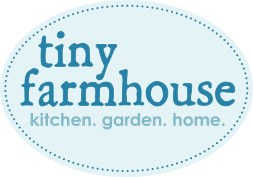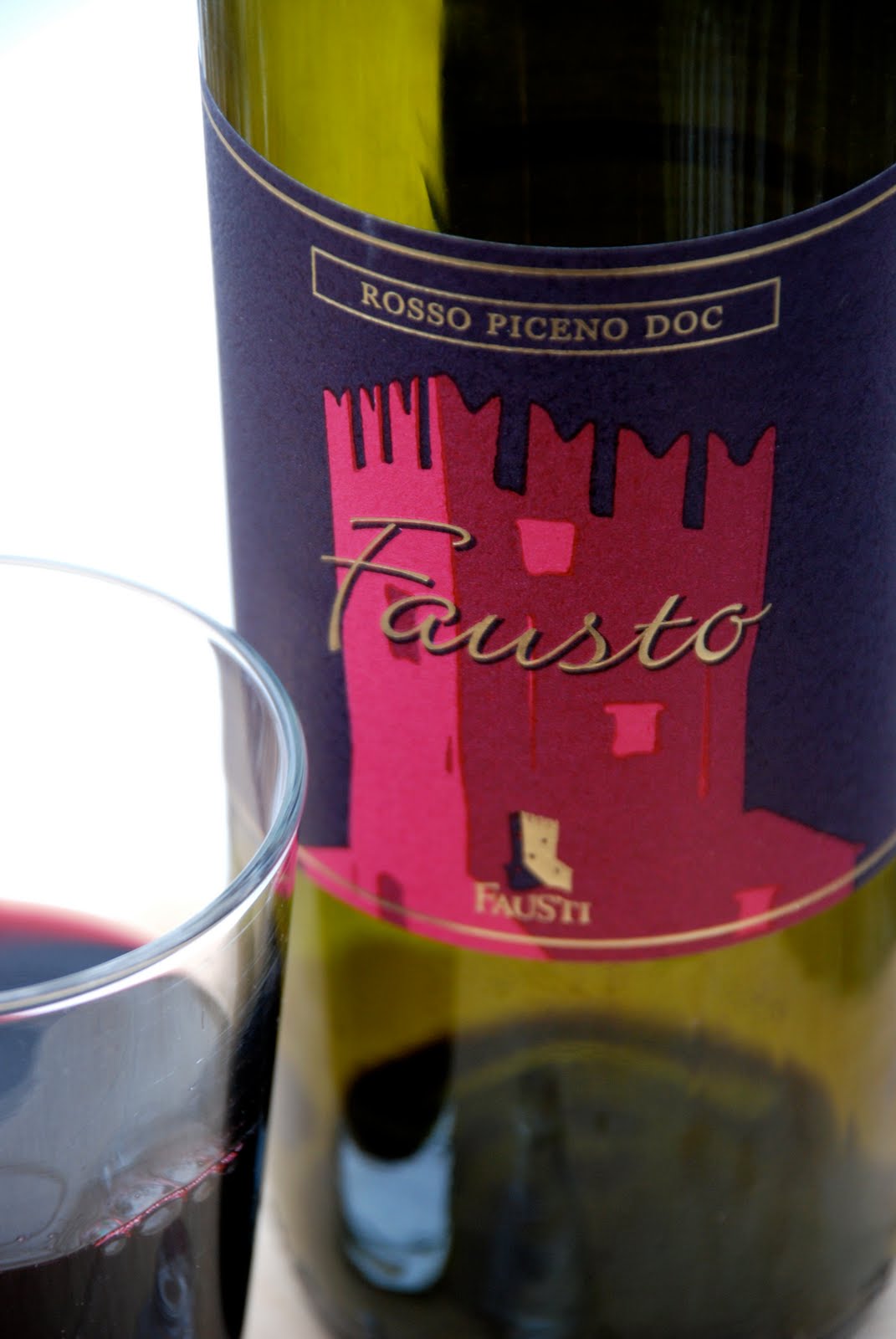Caro Santo Valentino,
Come amo il vino italiano? Lascimi contare i modi. Cominciando con questo Rosso Piceno ho avuto ieri sera.
Translation:
Dear Saint Valentine,
How do I love Italian wine? Let me count the ways. Starting with this Rosso Piceno I had last night.
For the record, I could only have come up with the salutation, first sentence, “con questo Rosso Piceno” and “sera” on my own. My Italian is rudimentary at best, and would generally be referred to as “restaurant Italian”, though I have managed to pull off a few Italian witticisms here and there. A few, over the course of many (seemingly past-life) trips to Italy. Not a particularly impressive funny-to-survival-only ratio, upon further reflection. So, for this intro to today’s post, I must thank you Mac Dashboard translator, or curse you, Mac Dashboard translator, depending upon whether either of the two native Italian speakers who visits this blog thinks my note to Saint Valentine actually translates properly.
Regardless of linguistic accuracy, surely you, dear reader, must appreciate my sentiment, whether you love Italian wines or not. We all have something that we’re passionate about, particularly in the food and drink area (even if you passionately despise something, you are still passionate), and for me, wine in general, but Italian wines in particular, fan the flames of desire.
Could this have something to do with loving Italy dearly, enjoying the architecture, food, and people-watching while quaffing the local wines, or, even, from some of JR and my more absurd winery visits (JR in a hard-hat touring a Barolo producer’s under-construction bored-into-the-mountain new cellar, while I stand outside in the dark with the vintner’s wife grabbing handfuls of grape skins destined to be made into grappa from a Dumpster-sized container, all while sipping on Barolo more than an hour and a half after our “tasting” started? Or tasting from the barrel in a Brunello producer’s cellar, just around the corner from a beautiful abbey where the monks still perform Gregorian chant?)? Perhaps. Yes. Perhaps. But beyond that, Italy seems to have the largest concentration of relatively unknown varietals, indigenous wines that are coming back into favor, at low prices at that, which is nice for those of us who love wine, but don’t have Barolo or Brunello budgets any longer.
Rosso Piceno is a blend of Sangiovese and Montepulciano d’Abruzzo grapes, produced in the region of Le Marche on the Adriatic coast. This blend has been referred to in less-than-favorable terms relative to the more upscale Rosso Conero, also produced in Le Marche, for Rosso Piceno is produced more for quantity than quality, it seems.
Oz Clark points out in his Encyclopedia of Wine that Rosso Piceno is a fruitier and less interesting version of Rosso Conero, “with the corresponding fluctuations in quality that you would expect from such a basic store cupboard wine.” Ouch. I think even the grapes felt the sting of that statement.
However, the Encyclopedia was published in 1993, and vast changes and improvements have been made in Italian wine-making (if you doubt, please refer to your memory of Chianti in straw-covered bottles versus the Chianti of today), and this bottle of Fausti’s Rosso Piceno Fausto 2008 was fruity, yes, but not extracted, and was overall complex, smooth, and quite dry.
Sangiovese, which comprises 40% of the Fausti Rosso Piceno, is the primary grape in Chianti, so it’s not exactly an unknown indigenous varietal, though I suspect that the Rosso Piceno blend might be a new discovery for many people, as wines of Le Marche seem to be lesser-known, as far as Italian wines go.
The Fausti Rosso Piceno Fausto 2008 was recommended to me by Mark Gasbarro, of my favorite wine shop, Gasbarro’s, on Federal Hill in Providence, Rhode Island. Mark explained that this wine used to retail for $16.99, but the price has been dropped to $10.99 – Mark and his cousin, Frank, were very enthusiastic about the wine and had purchased 50 cases for the store. When I asked why the drop in price, Frank told me that wineries were all feeling the pinch of the downturn, and they’d rather move product than sit on it – $10.99 is a great price point for we value wine seekers, that’s for sure. Throughout the industry, the trend in retail is toward the $8 to $12 bottle of wine, and, while I am all in favor of farmers (wineries are farms, after all) being paid a fair price, I must admit that wine trending toward a lower price point makes me giddy. It’s unlikely that I would shell out $16.99 for wine these days, although that was a pretty reasonable price, as far as I was concerned, back in the days when I worked steadily. However, $10.99 is within my comfort zone, which, incidentally, is completely in line with the retail trend, and Mark and Frank were right – this wine is delicious.
The primary aromas are cherry and violets, the violet smell hits you at the end, and is almost as intense as a perfume shop or house-spray – maybe even comparable with a Yankee Candle, the violet scent is so strong and unmistakable. I also picked up hints of smoke and wood, and a savory, saline smell – pardon the comparison, but I have little nieces who like the snacks I’m about to compare the smell to, and so, Goldfish it is. That’s a first, I must admit. JR picked up prunes on the nose, and tasted plums.
My first impression of the wine was that it was complex and layered, with a hint of caramel mixed in with plums and stone fruit, and assertive, yet pleasant tannins. As it turns out, the description of the wine on the distributor’s website includes wild cherry and violet on the nose (I’m telling you, even a novice smeller-of-wine wouldn’t mistake this violet smell), plus a little oak. Alas, no Goldfish verification did I get. They also describe the flavor as that of wild cherry, which, I’m feeling I covered with my general “stone fruit” description. The distributor and I are also in agreement about food pairing – I went with Bolognese sauce (it’s an at-least-once-weekly meal here at our house during the winter, and odds are that I’m drinking a hearty red alongside the meat sauce), and thought that grilled or broiled sausage would be great with this wine, and, perhaps, a pork and olive roast would stand up well (I’m working on a recipe for said pork/olive roast – so far, promising, but requiring more testing). I’ll have to suss that out next weekend, for sure.
I highly recommend the Fausti Rosso Piceno Fausti as a winter warmer. I’m already looking forward to warming up with that pork roast and Rosso Piceno, and that with 5 days to go until the weekend (and this long weekend not yet over. I’m not sure that I want to analyze my weekend-to-weekend anticipation too much, it may say something disturbing about my weekday motivation).
Dinner tonight: Chicken Parm with Linguine and Red Sauce. Estimated cost for two: $5.20. I may add in a little pile of greens from the Providence Wintertime Farmers Market as well, for about another buck-fifty. I got a nice little bag of greens for $3.00 on Saturday, and if we have them with tonight’s dinner, we’ll use about half of the bag. Back to the chicken parm, now, though. The chicken breast was on sale at Whole Foods a couple of weeks ago for $2.99/pound. The two breast halves per package are definitely enough to feed 4, as they weigh around 1/2 pound per half. I froze this package, and it cost $3.29 (I did have the foresight to defrost it in the fridge overnight, so we’re all set for tonight – always with the planning meals ahead, I am). The egg for the breading process costs 26-cents (we are buying eggs now as the laying hens are apparently in need of another chicken hypnosis scare and haven’t laid one single egg in weeks. Fourteen hens, five weeks, no eggs. They hate winter as much as we do, I guess.). The flour costs 6-cents, the bread crumbs will max out at 25-cents ($1.99 for 4 cups of Whole Foods 365 Everyday Value panko crumbs), the oil for frying will cost 48-cents. The oil for the sauce will cost 36-cents, the shallot will run us around 25-cents, the thyme will cost 6-cents, the canned tomatoes were $2.00, I’ll use a little milk to cut the acid, and that will be no more than 12-cents. The cheese we’ll melt atop the breaded chicken breasts will be around 1/2 of an 8-ounce bag that cost $2.50 (on sale, of course), and the pasta will be 1/2 of a 1-pound box that cost $1.99. The chicken and sauce total is $8.39, or $4.20 (rounding up) for two servings (we’ll both have leftovers in our lunch tomorrow, along with those greens from the farmers market), so then we just add the one dollar in pasta to that, and there we are. Even if we get all the way up to $6.70 with the greens, that’s still a pretty inexpensive Monday holiday meal.

